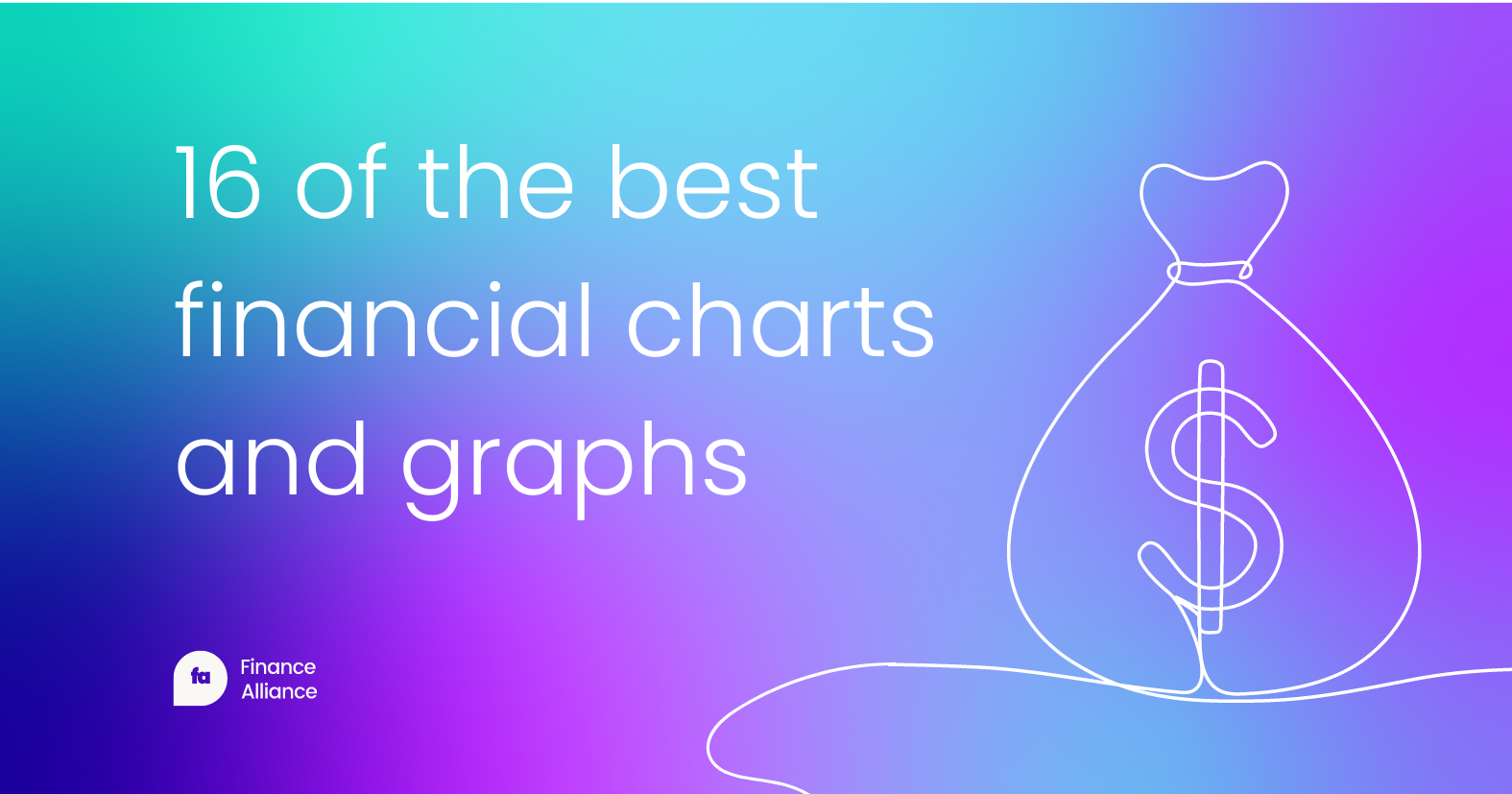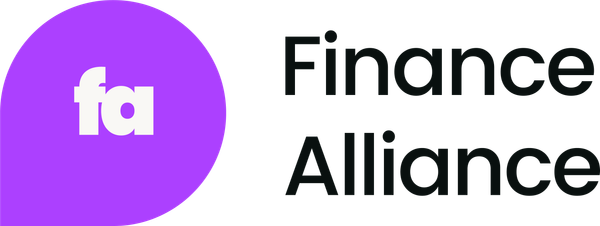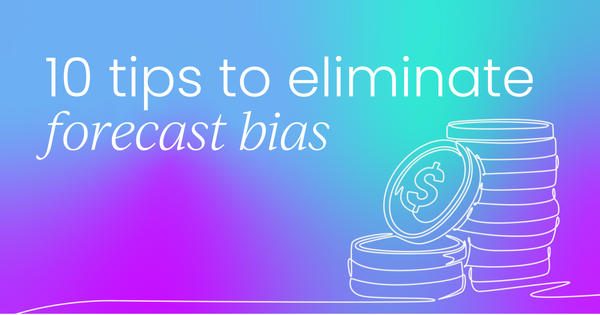No matter how sophisticated our models get, forecast bias has a sneaky way of slipping into our financial plans.
It’s just part of being human, but when our numbers consistently miss the mark, the impact can be huge. Things like missed targets and misaligned budgets are just some examples of what can go wrong.
So, if you want to stop forecast bias from creeping in, here are 10 practical ways to put an end to it.
What is forecast bias?
Before we get into the tips, here’s a quick refresher.
The forecast bias definition is simple: it's the tendency of a forecast to consistently overestimate or underestimate actual outcomes. In other words, it’s not just being wrong sometimes, it’s being wrong in a predictable direction.
For example:
- Sales leaders sandbag numbers (lowball them) to beat their quotas.
- Finance teams overestimate cost savings from new initiatives.
- Product teams paint overly rosy launch timelines.
If you’re wondering how we spot it? That’s where the forecast bias formula comes in handy:
Forecast Bias = (Forecasted Value – Actual Value) / Actual Value × 100
Sometimes, it’s also referred to as the bias forecast formula, but it all comes down to the same idea - if your forecast is consistently too high or too low, you’ve got a bias problem.
And trust me, calculating forecast bias after the fact is the easy part.
Preventing it?
That’s where the real challenge (and opportunity) lies.

10 tips to remove forecast bias
Forecasting is hard enough without our own brains getting in the way. But that’s exactly what forecast bias does. It quietly distorts our predictions based on hopes, fears, incentives, and past experiences.
But you can take steps to eliminate biased forecasts from your financial planning process. Here are 10 tips to help you do just that:
1. Separate your forecasts from your targets
One of the fastest ways to introduce forecast bias is to confuse what you hope will happen (your target) with what you think will happen (your forecast). As you can imagine, this can lead to overly optimistic (or pessimistic) numbers that don't reflect reality, which can set you up for future issues.
When leadership pressures teams to "hit the target" in forecasts, the data can get a lot more flexible. Unfortunately, this flexibility doesn’t always mean accuracy, which results in financial plans built on shaky foundations.
One of the best ways to reduce forecast bias is to make sure they’re objective. Yes, your targets can be ambitious, but they need to be realistic.
2. Use historical data as your anchor
When you rely on historical data, you give yourself (and your forecast) an unbiased starting point. Unlike relying on your own thoughts and opinions, historical data shows exactly what happened.
By anchoring your forecasts to this past reality, you ground your expectations, making it easier to spot predictable patterns (like seasonality) and reality-check overly optimistic or pessimistic thinking.
So, before making any forward-looking assumptions, run a full historical trend analysis and then look for patterns (margin shifts, growth rates, etc.).
3. Implement rolling forecasts
Static forecasts often grow stale while rolling forecasts help prevent bias because they transform forecasting into a continuous process, not a fixed annual event.
Here are a few more reasons why rolling forecasts are an effective way to reduce forecast bias:
- They reduces building pressure to hit arbitrary year-end targets, which can lead to end-of-period manipulation.
- Rolling forecasts ensures that regular reality checks against actual results are being carried out, helping to spotlight any existing biases.
- They make it easier to incorporate new information rather than relying on outdated assumptions.
4. Incentivize accuracy, not just performance
Why do forecasts often miss the mark?
Well, it often boils down to what we reward. If we solely focus on rewarding teams for hitting targets (regardless of how realistic their initial predictions were), we inadvertently encourage bias.
To foster more accurate and reliable forecasts, consider a dual approach to incentives:
- Track and value both outcome achievement AND forecast precision.
- Recognize and celebrate teams that demonstrate forecasting accuracy.
- Implement clear metrics for forecast accuracy.
- Consider linking a portion of performance-based rewards to forecast accuracy.
By shifting the incentive structure to value both performance and accuracy, you can create a culture that prioritizes transparency, realism, and credibility in your forecasting process.

5. Leverage predictive analytics and AI
Human intuition has a place, but machines are great at spotting patterns we can't see. So, if you're still relying purely on Excel and gut feelings, you're inviting forecast bias.
To help reduce bias forecasting, you could try using tools that apply predictive analytics to historical and external data (market trends, customer behavior, and supply chain signals, etc.). You could also use AI to benchmark human-driven forecasts against machine predictions to uncover hidden biases.
6. Run multiple scenario analyses
Thinking through different possibilities ("what ifs") stops you from just sticking to one guess, which might be too hopeful or the opposite. Running multiple scenario analyses encourages you to consider a range of potential outcomes beyond a single, potentially biased "most likely" scenario.
As a result, it gives you a broader perspective and reduces the impact of any single optimistic or pessimistic viewpoint.
By modeling different possibilities, you acknowledge uncertainty and avoid anchoring your forecast to a single, potentially flawed assumption.
Quick fire tips:
- Always model at least three outcomes: best case, base case, worst case.
- Stress test your base assumptions: What if growth slows by 10%? What if input costs spike 20%?
Scenario modeling = less emotional attachment to one perfect, likely-biased view of the future.
7. Encourage cross-functional input
Finance doesn’t always have perfect visibility into what's happening on in every department.
Sales, marketing, operations, etc. - they all hold real insights that can help de-bias your forecast assumptions.
Of course, you need to be mindful of anchoring bias from these groups too. Like everyone else, they have their own incentives, which is why you should encourage open discussion, not blind acceptance.
Remember that the goal is to leverage the knowledge of each team while also maintaining objectivity. To help encourage more input from other departments, you could try building a collaborative forecasting session where key players check assumptions. Or you could ask different teams what they’re seeing before you lock forecasts.

8. Conduct post-forecast bias audits
A post-forecast bias audit is a review of past forecasts compared to actual results. The goal with an audit like this is to identify any systematic overestimations or underestimations, revealing potential biases in the forecasting process.
A bias audit is a really useful, but often overlooked, way to find consistent problems in how we forecast. The best time to do one is right after each forecasting period ends. That's when you should compare what you predicted with what actually happened.
9. Introduce a challenger forecast
Sometimes the best way to fight bias is to actively court disagreement. That’s what a challenger forecast does. Instead of just relying on the initial forecast (often the "baseline" or "official" forecast), a challenger forecast involves creating an alternative prediction, often built with different assumptions, data sources, or methodologies.
This deliberately introduces a contrasting viewpoint, forcing a deeper examination of the original forecast's underlying logic and potential blind spots.
Helpful tips:
- Designate an individual or team (maybe FP&A or an external consultant) to build an independent forecast without seeing the first version.
- Compare results and investigate why they differ.
10. Train teams on cognitive bias awareness
Most people aren’t even aware of how their brains trick them during forecasting. One of the best ways to reduce forecast bias is with proper training that helps bring subconscious biases into the light where they can be managed.
Tips:
- Run workshops on common biases (like anchoring, optimism, and recency bias) and provide practical strategies for recognizing and mitigating them.
- Develop easy-to-use checklists or "bias busters" for planners, offering simple questions to consider when setting forecast numbers to challenge their assumptions.
Encourage your team to ask questions like:
"Am I adjusting this number based on evidence — or just instinct?"
"What’s the worst-case version of this assumption?"
"What does the data actually say?"
Over time, bias forecasting becomes something your entire team knows to watch out for, not just the finance nerds (no judgment).
Is it really possible to reduce forecasting bias?
You can’t 100% eliminate forecast bias, but you can absolutely control it.
Every tip you layer into your process makes your forecasts stronger, sharper, and more credible.
🎯 Challenge for you: Pick three tips from this list and implement them in your next forecast cycle. Track the difference.
In a few quarters, you won’t just have better numbers, you'll have a more trustworthy, respected finance function.
Subscribe to The Monthly Balance newsletter
Stay up-to-date with the latest industry news, updates, events, and more – all sent straight to your inbox each month.
Keep up with the latest releases on the Finance Alliance blog and be the first to know about upcoming events, reports, and industry news!



 Follow us on LinkedIn
Follow us on LinkedIn






